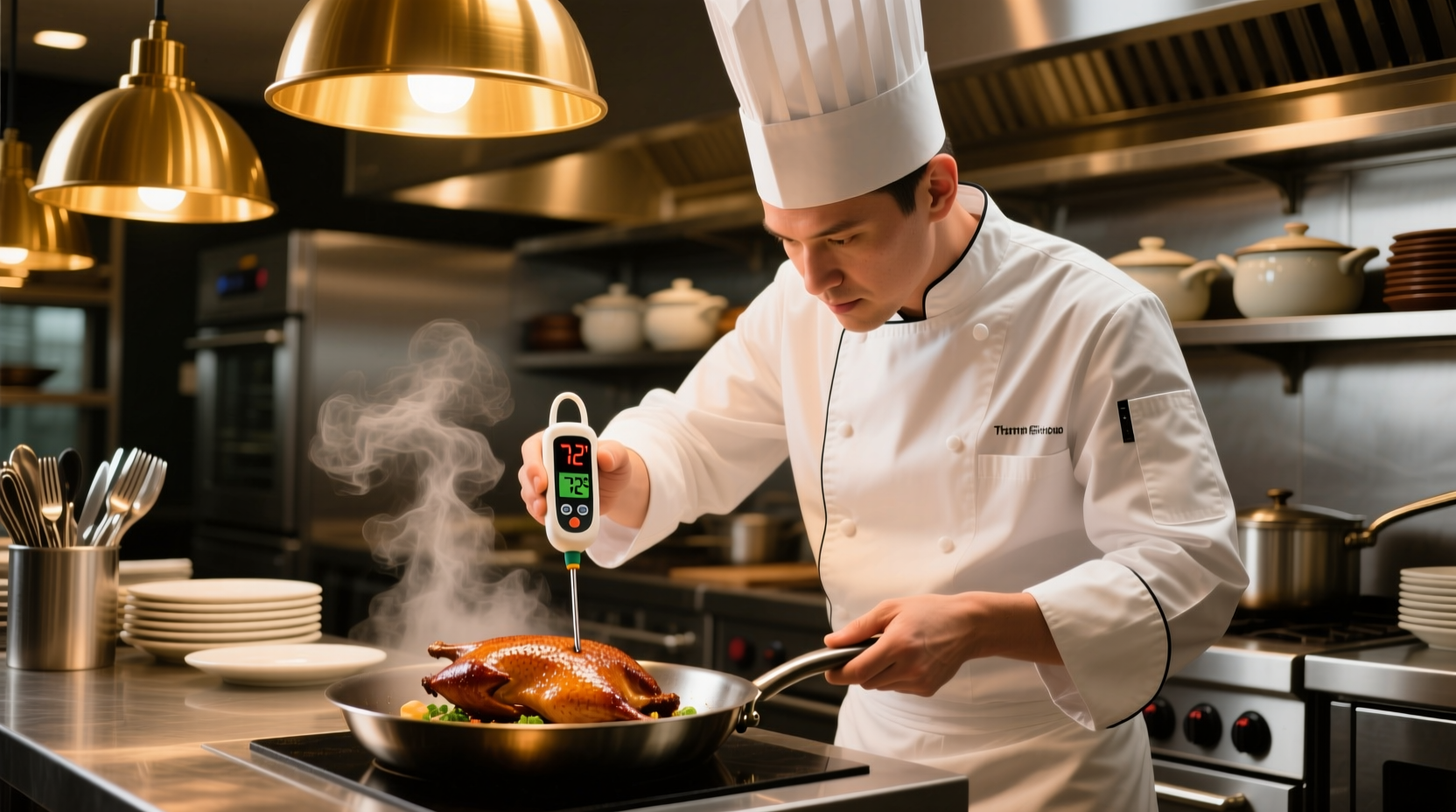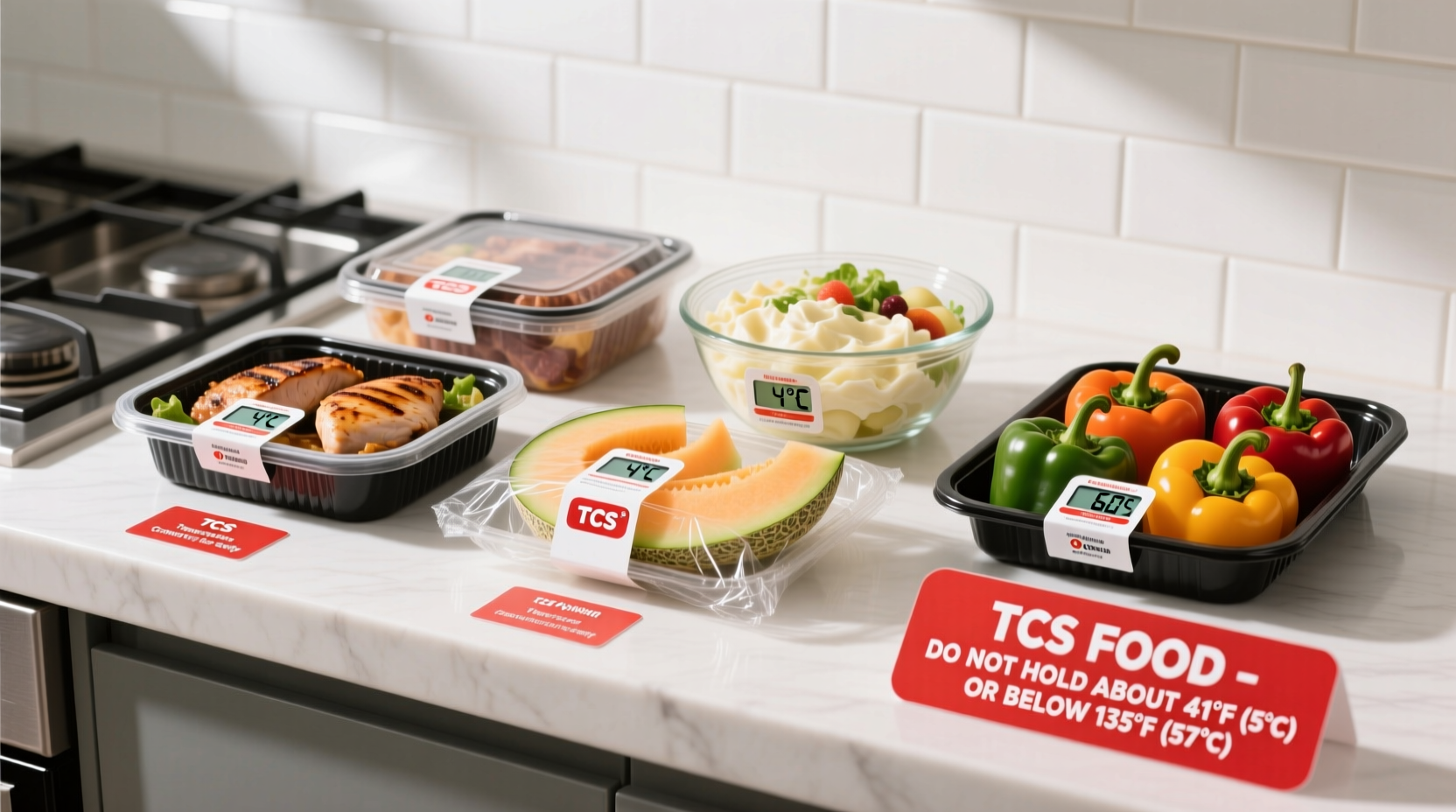When you're handling food in professional or home kitchens, knowing which items fall under TCS classification isn't just regulatory compliance—it's your first line of defense against foodborne illness. Each year, unsafe food handling causes approximately 48 million cases of food poisoning in the United States alone, with TCS foods representing the majority of outbreak sources. This guide breaks down exactly what qualifies as TCS food, why it matters for your safety, and how to handle these items properly.
What Exactly Are TCS Foods?
TCS stands for Time/Temperature Control for Safety. These are foods that require specific time and temperature management to limit pathogen growth or toxin production. The FDA Food Code defines TCS foods as those that need refrigeration at 41°F (5°C) or below, or hot holding at 135°F (57°C) or above, to remain safe for consumption.
Unlike non-perishable items, TCS foods create ideal conditions for bacteria like Salmonella, E. coli, and Listeria when left in the temperature danger zone (41°F-135°F) for too long. The critical threshold? Just four hours in this range can make certain TCS foods unsafe to eat.

Why TCS Classification Matters for Food Safety
Understanding TCS foods isn't just about following regulations—it's about preventing potentially life-threatening situations. When TCS foods remain in the temperature danger zone, bacteria can double in number every 20 minutes under ideal conditions. Consider these real-world implications:
- A single contaminated egg salad sandwich can contain enough Staphylococcus aureus toxin to make dozens of people violently ill
- Improperly cooled chili can allow Clostridium perfringens to multiply to dangerous levels overnight
- Cut melons left at room temperature become breeding grounds for Salmonella
The FDA estimates that proper TCS food handling prevents over 1 million foodborne illness cases annually. This isn't theoretical knowledge—it's practical food safety that protects your customers, family, and reputation.
TCS Food Categories and Specific Examples
Not all foods require time and temperature control. The following categories consistently qualify as TCS foods according to the FDA Food Code 2022:
| TCS Food Category | Common Examples | Special Handling Requirements |
|---|---|---|
| Meat and Poultry | Beef, pork, chicken, turkey, fish | Cook to minimum internal temperatures (145°F for whole cuts, 165°F for ground) |
| Dairy Products | Milk, cheese (except hard cheeses), yogurt, custards | Keep refrigerated; avoid cross-contamination with raw foods |
| Eggs and Egg Products | Shell eggs, liquid eggs, quiches, egg salads | Cook to 160°F; don't hold cooked eggs between 41-135°F for more than 4 hours |
| Seafood | Fish, shellfish, sushi, ceviche | Keep at 41°F or below; cook to 145°F or until flesh is opaque |
| Heat-Treated Plant Foods | Cooked rice, pasta, potatoes, beans | Cool rapidly; don't hold between 41-135°F for more than 4 hours |
| Cut Produce | Cut melons, tomatoes, leafy greens, pre-cut fruit | Refrigerate immediately; use within 7 days |
When Does the Temperature Danger Zone Become Critical?
The temperature danger zone (41°F-135°F) isn't equally dangerous throughout. Bacterial growth accelerates dramatically at warmer temperatures:
- 41°F-70°F: Slow bacterial growth (4-6 hours generally safe)
- 70°F-125°F: Rapid growth (2 hours maximum safe time)
- 125°F-135°F: Extremely rapid growth (1 hour maximum safe time)
This explains why the USDA Food Safety and Inspection Service emphasizes the "two-hour rule" for most TCS foods at room temperature, reducing to one hour when ambient temperatures exceed 90°F.
Common Misconceptions About TCS Foods
Several persistent myths about TCS foods put consumers at risk. Let's clarify these critical points:
Myth: "If it smells fine, it's safe to eat"
Pathogenic bacteria like E. coli and Salmonella often don't produce noticeable odors or visible changes in food. Relying on smell is dangerously unreliable for TCS foods.
Myth: "Adding mayonnaise makes food spoil faster"
Actually, the acid in commercial mayonnaise (pH 3.8-4.0) inhibits bacterial growth. The real danger in egg salads and potato salads comes from the eggs and potatoes themselves, which are TCS foods requiring proper temperature control.
Myth: "All cheeses are TCS foods"
While soft cheeses like brie and feta require temperature control, hard cheeses (cheddar, parmesan) and processed cheeses have lower moisture content that inhibits bacterial growth, making them generally non-TCS.
Practical TCS Food Handling Guidelines You Can Implement Today
Whether you're a professional chef or home cook, these evidence-based practices will significantly reduce food safety risks:
Temperature Monitoring Protocol
Use a calibrated thermometer to check temperatures at multiple points in food. The FDA Food Code specifies:
- Check temperatures every 4 hours for cold-held TCS foods
- Check every 2 hours for hot-held TCS foods
- Document all temperature readings with time stamps
Cooling Techniques That Actually Work
Improper cooling causes nearly 25% of foodborne illness outbreaks involving TCS foods. Effective methods include:
- Dividing large quantities into shallow containers (max 2 inches deep)
- Using ice wands or blast chillers for rapid cooling
- Stirring soups and sauces frequently during cooling
- Aiming to cool from 135°F to 70°F within 2 hours, then to 41°F within additional 4 hours
Reheating Requirements
When reheating TCS foods, the FDA requires reaching 165°F within 2 hours, with stirring to ensure even heating. This temperature kills any bacteria that may have developed during storage.
Special Considerations for High-Risk TCS Foods
Certain TCS foods present unique challenges requiring additional precautions:
Raw Seed Sprouts
Alfalfa, clover, radish, and other sprouts have caused numerous outbreaks due to ideal growing conditions for pathogens. The FDA recommends that restaurants serving raw sprouts implement additional safety measures beyond standard TCS requirements.
Cut Leafy Greens
Processing damages plant cells, releasing nutrients that accelerate bacterial growth. Always use the freshest greens possible and maintain strict temperature control from preparation to service.
Garlic in Oil
This combination creates perfect conditions for Clostridium botulinum growth. Commercial products use acidification to prevent this, but homemade versions require refrigeration and consumption within 4 days.
How TCS Regulations Have Evolved
The concept of TCS foods emerged from decades of food safety research. Key milestones include:
- 1993: First FDA Food Code identifies "potentially hazardous foods" (PHF)
- 2001: Definition refined to focus on specific pathogen risks rather than general hazard
- 2009: Terminology changes from PHF to TCS to better reflect the critical control points
- 2017: FDA clarifies cut produce as TCS foods following multiple melon-related outbreaks
- 2022: Current FDA Food Code maintains consistent TCS definitions with enhanced cooling requirements
This evolution reflects increasingly sophisticated understanding of foodborne pathogens and their growth conditions, moving from broad categories to precise scientific criteria.
When TCS Rules Don't Apply: Important Exceptions
Not all situations require strict TCS adherence. Understanding these boundaries prevents unnecessary waste while maintaining safety:
- Acidified foods: Items with pH below 4.6 (like properly prepared salsa) inhibit pathogen growth
- Reduced oxygen packaging: When combined with proper refrigeration and labeling
- Time as a public health control: In specific situations, food establishments may use time (rather than temperature) for up to 4 hours before service, with strict documentation
- Hard cheeses: Low moisture content naturally prevents bacterial proliferation
These exceptions require specific documentation and procedures approved by your local health authority—never assume an exception applies without verification.
Implementing TCS Knowledge in Your Food Handling Practices
Understanding TCS foods transforms from theoretical knowledge to practical safety when you implement these steps:
- Conduct a TCS inventory of all foods you handle regularly
- Establish monitoring procedures for time and temperature for each TCS category
- Train all handlers on specific requirements for different TCS foods
- Document everything—temperature logs, cooling records, training completion
- Review and update procedures quarterly or when introducing new menu items
Remember: Proper TCS food handling isn't just about avoiding health code violations—it's about protecting people from preventable illness. When you understand why certain foods require special handling, you become part of the solution to food safety challenges affecting millions each year.
What's the difference between TCS and potentially hazardous foods?
TCS (Time/Temperature Control for Safety) is the updated term replacing "potentially hazardous foods" (PHF). The concept remains similar, but TCS more accurately describes the specific control needed—time and temperature management—to prevent pathogen growth in certain foods.
How long can TCS foods remain in the temperature danger zone?
TCS foods should not remain in the temperature danger zone (41°F-135°F) for more than 4 cumulative hours. After 4 hours, the food must be discarded. In temperatures above 90°F, this timeframe reduces to 1 hour for many TCS foods.
Are all fruits and vegetables considered TCS foods?
No. Whole, intact fruits and vegetables are generally not TCS foods. However, cut melons, cut tomatoes, and cut leafy greens are specifically classified as TCS foods due to increased risk of pathogen growth after cutting.
Does freezing destroy bacteria in TCS foods?
Freezing does not destroy bacteria—it only stops their growth. When frozen TCS foods thaw, bacteria can become active again. Proper cooking after thawing is necessary to kill pathogens, not just reaching serving temperature.
Can I tell if TCS food is unsafe by looking at it?
Not reliably. Pathogenic bacteria that cause foodborne illness often don't change a food's appearance, smell, or taste. The only safe approach is following proper time and temperature controls, not sensory evaluation.











 浙公网安备
33010002000092号
浙公网安备
33010002000092号 浙B2-20120091-4
浙B2-20120091-4